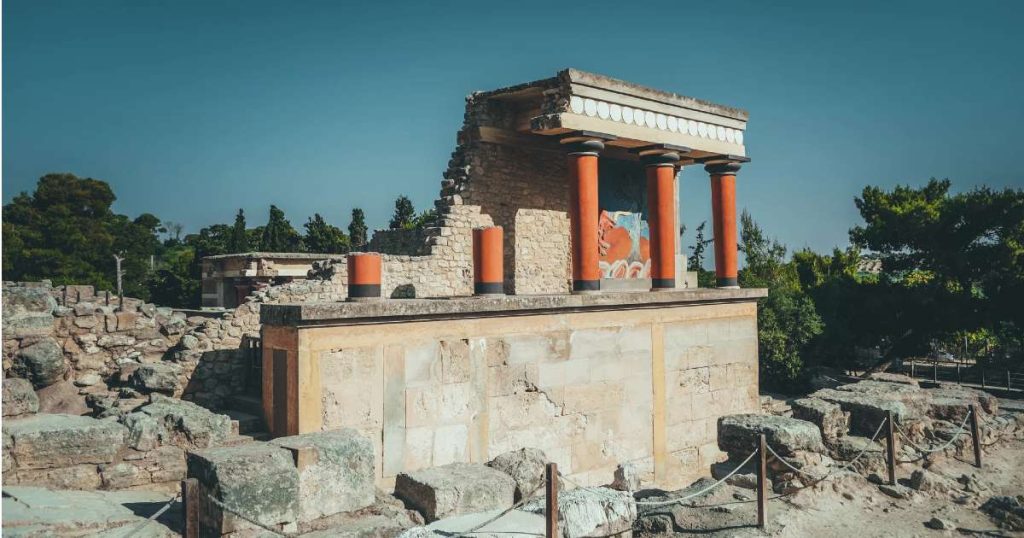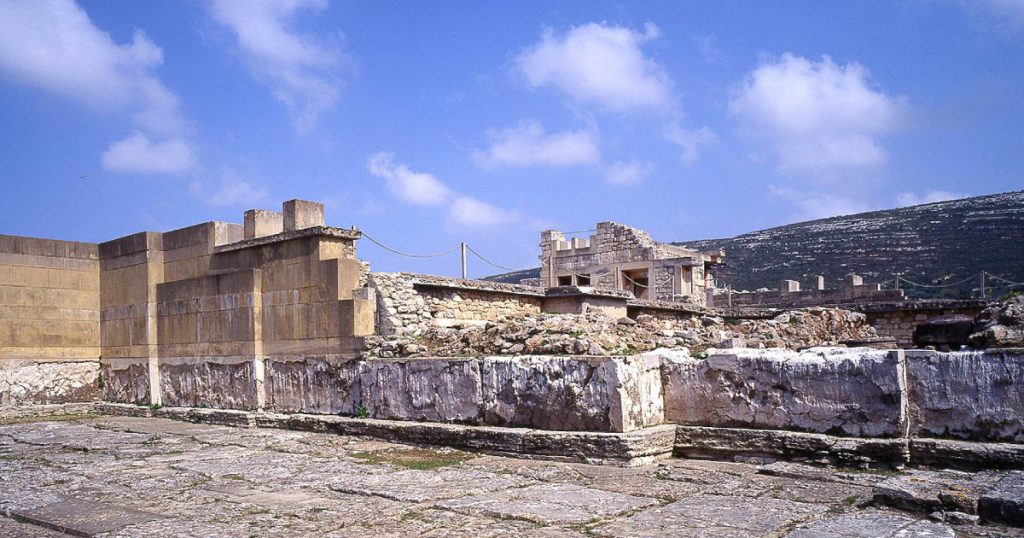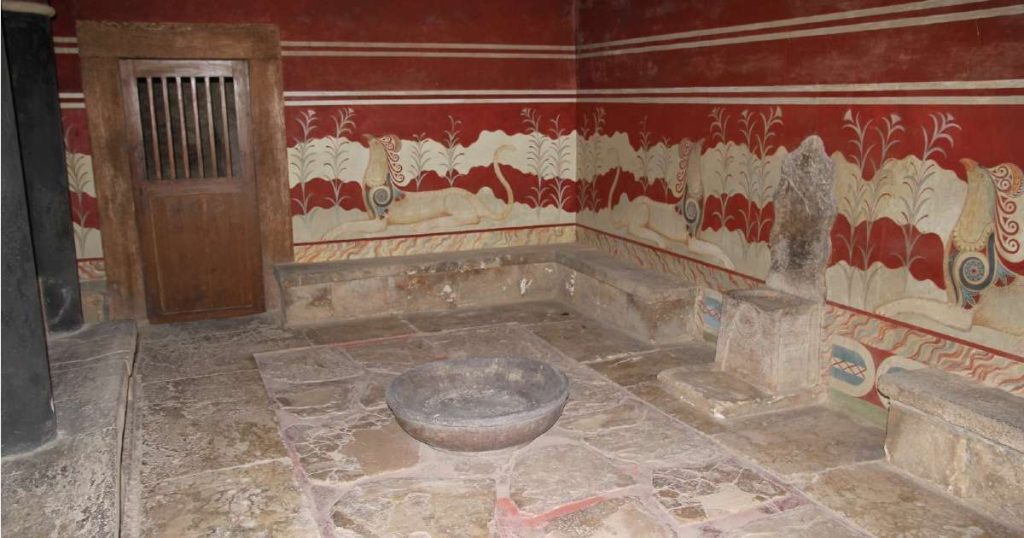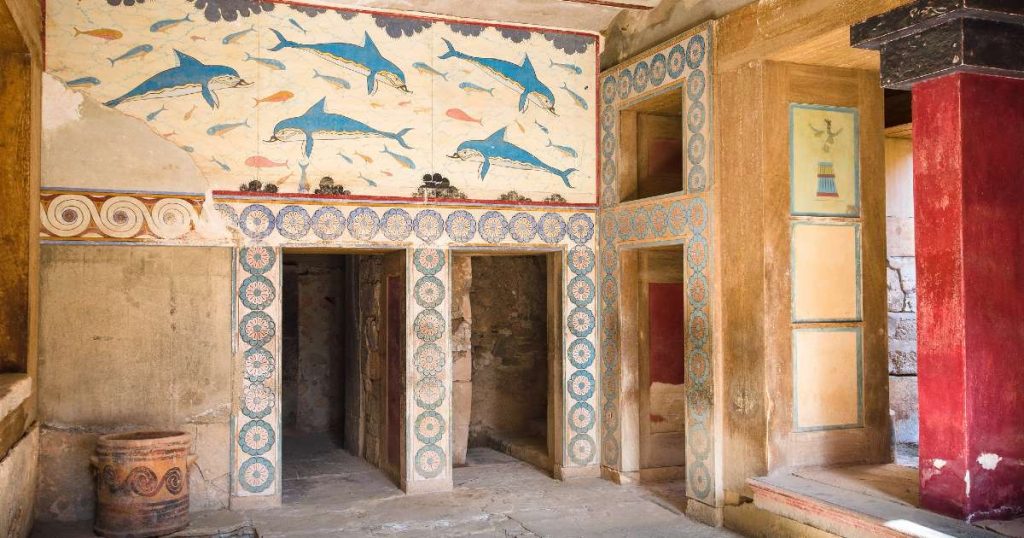Minoan Palace of Knossos
The first excavations were carried out in 1878 by the Heraklionite Minos Kalokairinos. This was followed by excavations conducted by the Englishman Sir Arthur Evans (1900-1913 and 1922-1930), which revealed the entire palace.
The oldest traces of habitation in the palace area date back to the Neolithic period (7000-3000 BC). The habitation continued in the pre-palatial period (3000-1900 BC), at the end of which the area was leveled for the construction of a large palace. This first palace was destroyed, probably by an earthquake, around 1700 BC. A second, more magnificent palace was built on the ruins of the old one. After a partial destruction around 1450 BC, the Mycenaeans settled in Knossos. The palace was permanently destroyed around 1355 BC by a major fire. The area it covers was inhabited again from the late Mycenaean period until the Roman years.
The palace of Knossos has undergone extensive restoration by archaeologist Sir Arthur Evans. It was multi-storey and covered an area of 20,000 sq m. The variety of building materials, the coloured mortars, the marbled walls and the frescoes that adorn the rooms and corridors are impressive. The high technical knowledge of the Minoans is confirmed by original architectural and constructional inventions, such as skylights and mullioned windows, the use of beams to reinforce the masonry, as well as the complex sewage and water supply network.




The palace is built around the large Central Courtyard, a place for public gatherings. A second courtyard, the Western Courtyard, was the official access to the palace and a place for ceremonies.
The western wing includes the official spaces for administrative and religious activities: the Tripartite Sanctuary, the Sacred Treasuries and the Columned Crypts. The Throne Room stands out, with the purification cistern and the alabaster throne flanked by benches. In the southern wing, the most important spaces are the South Propylon, the Processional Corridor and the South Entrance with the fresco of the prince with the Lilies. The eastern wing includes living spaces and large reception rooms, the most important of which are the Hall of the Double Peleki and the Queen's Palace. The imposing grand Staircase leads to these.
From the North Entrance It was the communication with the port of Knossos. The North Entrance is flanked by elevated arcades, of which the western one is decorated with the fresco of the Bull Hunt.
A large paved procession road, the Royal Road, led from the Small Palace and the city to the northwest corner of the palace, where an open-air theatrical space was formed.




